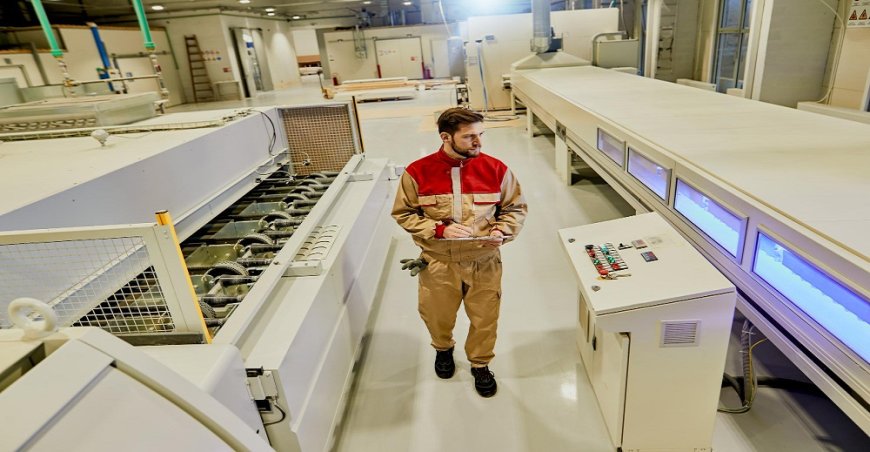Optical Sorting: Revolutionizing Industrial Processes
Optical sorting, also known as digital sorting, is an advanced automated process that utilizes cameras and lasers to sort solid products based on various criteria.
Optical sorting, also known as digital sorting, is an advanced automated process that utilizes cameras and lasers to sort solid products based on various criteria. This technology has transformed industries by enhancing efficiency, accuracy, and product quality, particularly in food processing, recycling, and pharmaceuticals. This article delves into the mechanics of optical sorting, its historical development, applications across different sectors, and future trends.
Understanding Optical Sorting
Optical sorters operate by employing sophisticated sensors and image processing systems to evaluate the characteristics of products on a production line. These systems can detect an object's color, size, shape, structural properties, and even chemical composition. By comparing these attributes against predefined accept/reject criteria, optical sorters can efficiently identify and remove defective items and foreign materials (FM) from the production stream. This capability allows for the separation of different grades or types of materials, significantly improving the quality of the final product.
Historical Development
The concept of optical sorting emerged in the early 20th century, driven by the need to automate the sorting of agricultural products. The first notable advancements occurred in the 1930s when companies like the Electric Sorting Company began developing color sorters for the bean industry in Michigan. By 1937, systems utilizing a two-color selection principle were in operation, marking a significant leap in sorting technology.As the decades progressed, optical sorting technology expanded beyond agriculture. By the late 1960s, it was being applied to the sorting of metals, and by the 1990s, it had become integral to waste management processes. The technological advancements of the late 1990s and early 2000s, particularly the introduction of new optical sensors such as CCD, UV, and IR cameras, further enhanced the efficiency and capability of optical sorters, allowing them to be utilized in a wide range of industries today.
Components of Optical Sorters
Optical sorters typically consist of four major components:
- Feeding System: This component ensures a steady flow of products into the sorting system.
- Optical Section: Here, the products are illuminated and analyzed using cameras and lasers to assess their characteristics.
- Sorting Mechanism: Based on the analysis, this mechanism ejects defective or unwanted items using air jets or other methods.
- Control System: This includes software that processes the data from the optical section and makes real-time sorting decisions based on user-defined criteria.
Types of Optical Sorters
Optical sorters can be categorized based on their design and application:
Channel Sorters
Channel sorters are the simplest form of optical sorters, ideal for small, hard, and dry products like rice and seeds. They utilize monochromatic or color cameras to detect color differences, making them a cost-effective solution with a small footprint.
Freefall and Chute-Fed Sorters
These sorters are more sophisticated and can handle a wider variety of products, including soft or wet items. Freefall sorters inspect products while they are in freefall, whereas chute-fed sorters stabilize products on a chute before inspection. These systems are particularly effective for sorting nuts, berries, and frozen fruits, as well as in recycling applications.
Applications Across Industries
Optical sorting technology is prevalent in various sectors, each benefiting from its unique capabilities:
Food Industry
In the food industry, optical sorters are widely used for processing fruits, vegetables, nuts, and grains. They enable non-destructive inspection at full production volumes, ensuring that only high-quality products reach consumers. This technology helps reduce waste and improve overall product quality, which is critical in a competitive market.
Pharmaceutical and Nutraceutical Manufacturing
Optical sorting is also utilized in the pharmaceutical sector to ensure the purity and quality of raw materials. By detecting contaminants and ensuring uniformity in product specifications, optical sorters play a crucial role in maintaining regulatory compliance and product safety.
Recycling
In waste management, optical sorters are employed to separate recyclable materials from waste streams. This process enhances recycling efficiency and helps in recovering valuable materials, thereby contributing to sustainable practices.
Advantages of Optical Sorting
The adoption of optical sorting technology offers numerous advantages over traditional manual sorting methods:
- Increased Efficiency: Optical sorters can process large volumes of products quickly, significantly increasing throughput compared to manual sorting.
- Improved Accuracy: By relying on precise measurements and predefined criteria, optical sorters minimize human error and ensure consistent quality.
- Cost Reduction: The automation of sorting processes reduces labor costs and minimizes waste, leading to higher profit margins for businesses.
- Enhanced Product Quality: With the ability to detect even subtle defects, optical sorting helps maintain high standards of product quality, which is essential for brand reputation and customer satisfaction.
Future Trends in Optical Sorting
As technology continues to evolve, the future of optical sorting looks promising. Key trends include:
- Integration of AI and Machine Learning: The incorporation of artificial intelligence will enable optical sorters to learn from past sorting decisions, improving their accuracy and adaptability over time.
- Enhanced Sensor Technologies: Advances in sensor technology will allow for even more detailed analysis of products, including the ability to detect chemical compositions and other complex attributes.
- Sustainability Focus: As industries increasingly prioritize sustainability, optical sorting will play a vital role in waste reduction and resource recovery, aligning with global environmental goals.
Conclusion
Optical sorting represents a significant advancement in industrial processing, offering unparalleled efficiency, accuracy, and quality control across various sectors. Its historical development reflects a continuous pursuit of automation and improvement, and its future is poised for further innovation driven by technological advancements. As industries embrace these changes, optical sorting will remain a cornerstone of modern manufacturing and processing, contributing to enhanced productivity and sustainability.
Read more information and insights related to the optical sorter market.













